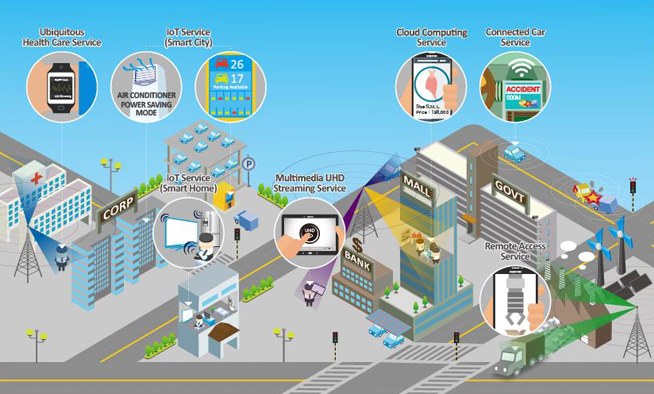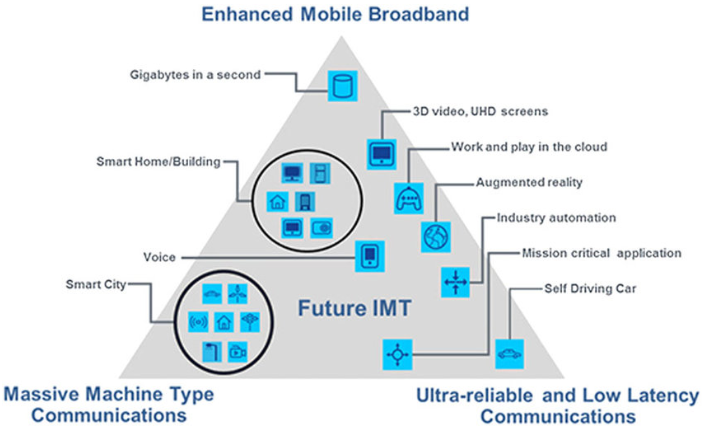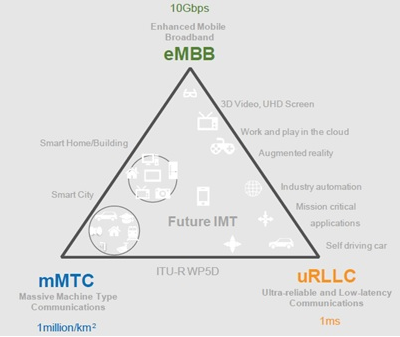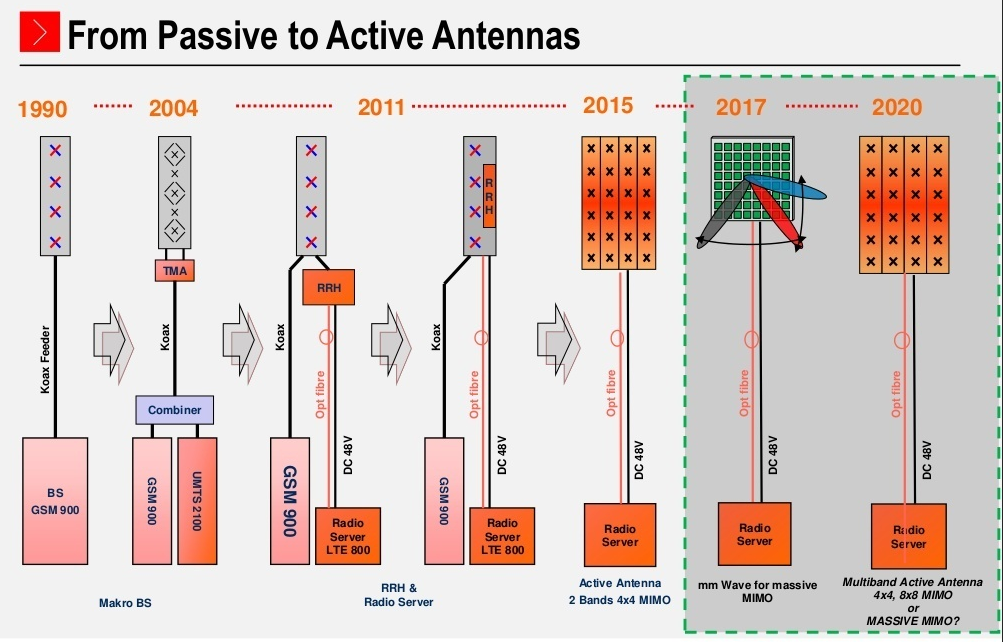5G is the fifth generation wireless technology for digital cellular networks that began wide deployment in 2019. As with previous standards, the covered areas are divided into regions called "cells", serviced by individual antennas.
1. Aspect of 5G
People says 5G provides wider bandwidth with high speed internet that we haven't experienced so far. It has great potential in terms of usecase's point of view.
One of the areas in 5G will be Immersive Multimedia Experience on broadcast, education, operation and etc. Below captured image shows the example:
Source: https://developer.samsung.com/tech-insights/5G/5g-service-vision
The other area we could meet in near future is IoT like Smart Office, Smart Store, and Smart Home, because 5G bandwidth is super wider compared to 4G(LTE), so it seems technically not easy to use full bandwidth as of today (2019).
Source: https://developer.samsung.com/tech-insights/5G/5g-service-vision
I assume there will be many players who wants to take a leadership on certain area of services based on 5G internet ecosystem - it will be not only network operators, but also service providers as well.
Other topics associated with 5G:
- ATSC 3.0 as Broadcast Standard in 5G - the next generation TV is coming
- ONE Media announced Advanced SoC for next generation TV for Mobile and Broadcast Applications
2. Main classes of services for 5G TV
2.1. Enhanced Mobile Broadband (eMBB)
Originally comes from 3GPP. eMBB enables for human to access to multimedia content, services and data.
Source: Usage scenarios of IMT for 2020 and beyond (source: ITU-R 3 ) [Colour figure can be viewed at wileyonlinelibrary.com]
2.2. Massive Machine Type Communications (mMTC)
Originally comes from 3GPP. Following features are supported by 5G mMTC use case.
- mMTC stands for massive Machine Type Communications.
- It supports high density of devices (about 2 x 105 in 106/Km2)
- It supports long range.
- It supports low data rate ( about 1 to 100 Kbps).
- It leverages benefits of ultra low cost of M2M.
- It offers 10 years battery life.
- It provides asynchronous access.
There are more standards like eMBB, uRLLC like below, you can see more about uRLLC below.
2.3. ultra-reliable Low Latency Communications (uRLLC)
Following features are supported by 5G URLLC use case.
- uRLLC stands for Ultra Reliability and Low Latency Communications.
- It provides ultra responsive connections.
- It offers less than 1 ms air interface latency.
- It offers 5 ms end to end latency between UE (i.e. mobile) and 5G eNB (i.e. base station).
- It is ultra-reliable and available 99.9999% of the time.
- It provides low to medium data rates (about 50 kbps to 10 Mbps).
- It offers high speed mobility.
2.4. Evolved MBMS(Multmedia Broadcast Multicast Service)
e-MBMS is an extension of the 4G LTE system. Operator can decide to allocate a part of the bandwidth available in downlink in a cell (up to 60%) to broadcast traffic that will serve multiple devices with the same content: video, audio, files, etc.
Content delivery is based on MPEG-DASH adaptive streaming but with a single representation or quality level per content.
3. Technical approaches in 5G Platform
| Classes | Descriptions |
|---|---|
| Network Slicing | Designed to be tuned and dynamically configured in multiple logically partitioned networks with different characteristics and customized QoS levels |
| Fixed wireless access | eMBB enables to distribute high quality content to mobile devices/connected TV/set top boxes in homes with high spectrum efficiency just like traditional TV broadcast terrestrial delivery (currently using DVB-T/T2, ATSC or ISDB-T technologies) |
4. 5G Antennas
4.1. Short wavelength communications
5G uses what are called “millimeter waves”, or short wavelength radio signals. This requires a new swath of bandwidth that is allocated on the frequency spectrum between 30–300 GHz. This increases the bandwidth available to cram more data and accommodate more users. This will require shorter wavelengths than previous networks, which means they cannot travel longer distances. These signals also cannot easily penetrate through walls and are easily absorbed by moisture and foliage. So why would engineers build a system that cannot travel far and has major drawbacks? That leads to the second feature of 5G (next item).
4.2. Small Cell tower installations
To make sure that signals are able to travel farther without fading, “small cell” towers using a dense deployment will be installed within an area to handle the signaling. They will be much smaller than your typical cellular tower. These small cell towers will be placed within a distance of no less than 200 feet and no more than 1,000 feet apart, so they are pretty close to each other. The advantage to being smaller is that there is more versatility to where they can be installed. They can be put on the side of buildings, utility poles, apartment rooftops just to give a few examples. The small cells then transmit and receive data on the 5G network covering a certain area. So the idea of 5G is replacing high power, low frequency towers with low power, high frequency small cells that communicate with a base station.
4.3. Beamforming Signaling System
To handle data traffic signaling, “beamforming” will be used. It determines the most efficient data delivery route in a 5G network. Beamforming actually sends the data from the small cell directly to the user. Since the signal is more concentrated, it reduces interference as well. Like its predecessor 4G, a 5G network makes use of packet switching over an IP network for data delivery.
4.4. Massive MIMO
MIMO or “Multiple-Input Multiple-Output” allows more signals to be sent and received at any given moment. This is implemented by installing more antennas as an array in a small cell. The problem of having so many antennas installed is addressed by beamforming. With MIMO, a base station can send and receive more signals to boost the capacity of a 5G network by a factor of 22, first reported by engineers at the University of Bristol and Sweden’s Lund University.
4.5. Full Duplex capabilities on the base station
FACT: Wireless providers don’t actually use full-duplex transceivers. In a 5G network, the use of full-duplex will allow data to be transmitted and received on base station transceivers at the same time using the same frequency. Past systems that supported full-duplex communications had to separate frequency channels to allow 2 users to communicate at the same time without having to take turns transmitting and receiving. Now it is possible using just one frequency channel through a circuit design which utilize high speed switching in the silicon. This allows antennas to transmit and receive while the incoming and outgoing signals are routed.
https://hackernoon.com/5g-networks-can-change-the-way-we-live-for-better-or-worse-ed2b3fc6b0e6




